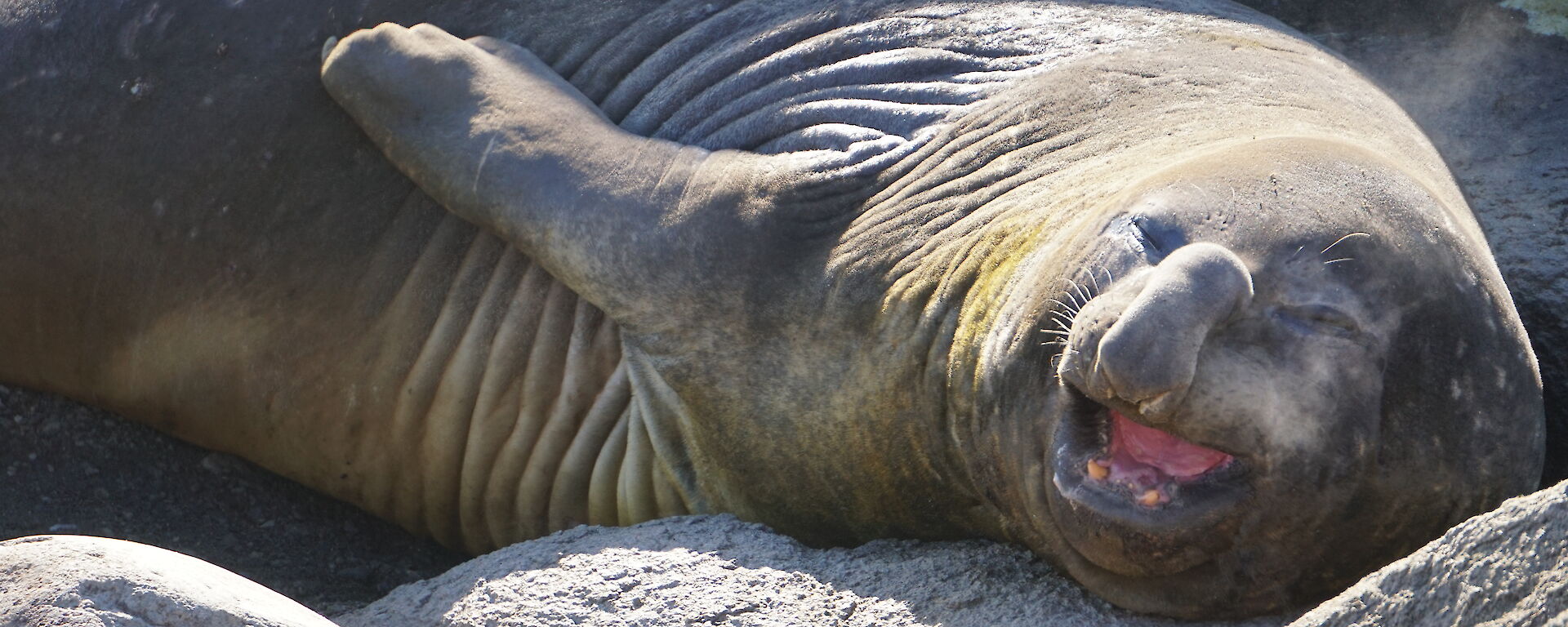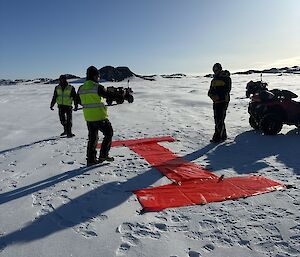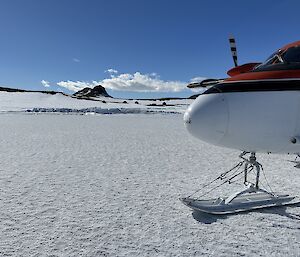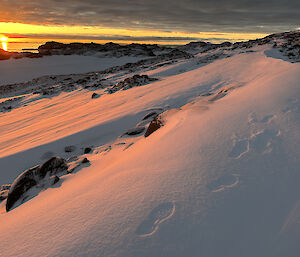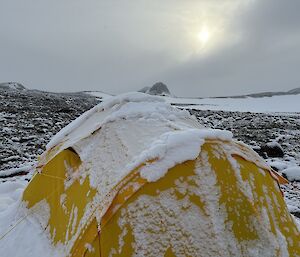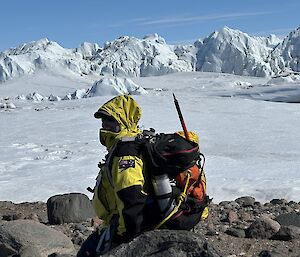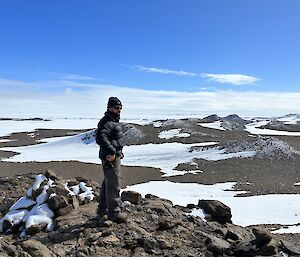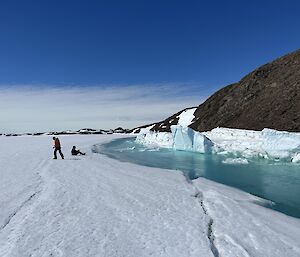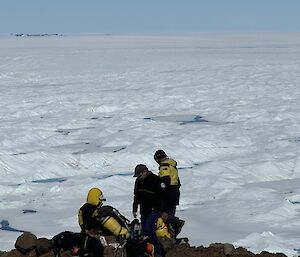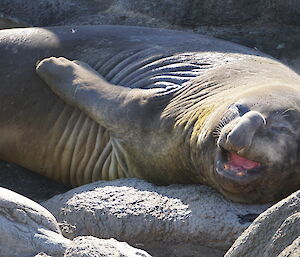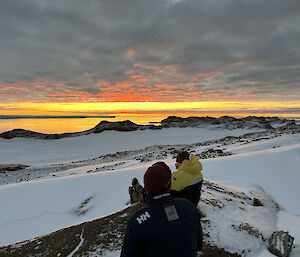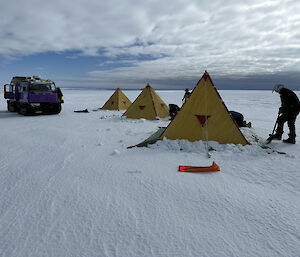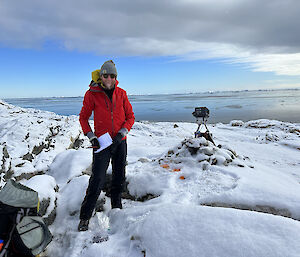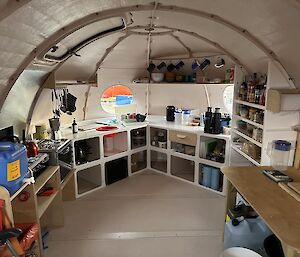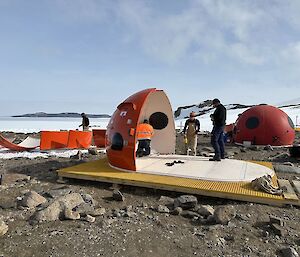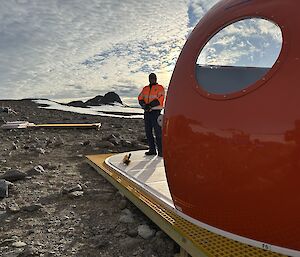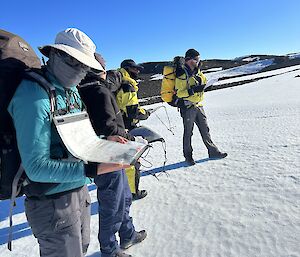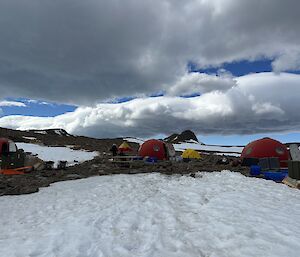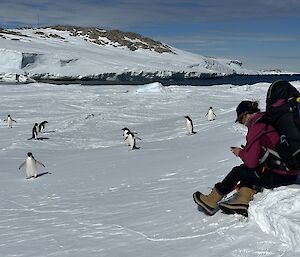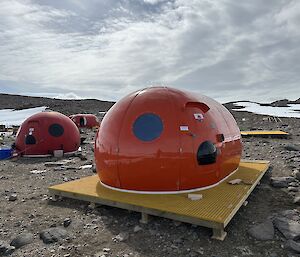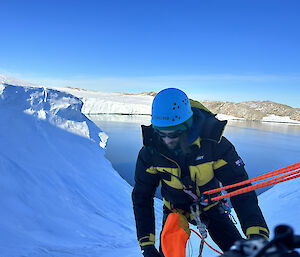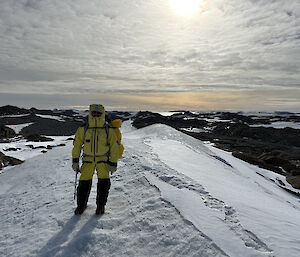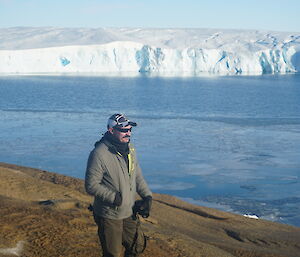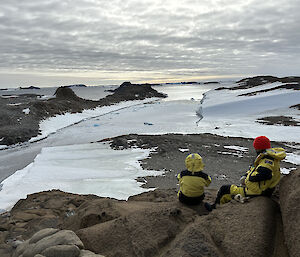Beginnings at Casey
As the incoming winter Field Training Officer (FTO), day one in Antarctica for me back in late November was an area familiarisation with the outgoing winter FTO – Flynn Jackman. This involved travel around much of the coastal and inland station operating area, a couple of huts, across some remaining sea ice and plenty of Adelie penguins and Weddell seals. I felt very lucky to have captured so much of the essence of East Antarctica in a day. Now my job was to help to introduce others to these unique scenes….
In the first few weeks I managed to take many other expeditioners across to Shirley Island to see their first penguins and seals, conduct ski loop inductions with many first time skiers and take groups on 24 hr survival training for their first night camping in Antarctica. During these experiences (as I have during my years of taking groups to remote and beautiful places around the world) I find myself people watching as much as enjoying the natural landscape and wildlife myself. I love to see the look of pure wonder and joy on peoples faces as they are looking at a new scene, a sunset, wildlife or the endless variations of light reflecting on snow, ice, water and clouds. In a powerfully bold and stark landscape like Antarctica there is also a shared humbling expression on people’s faces basking in the recognition that we humans are a very small part of this vast continent. When watching penguins go about their business or seals negotiating real estate then our shared experience is that of the best seats in the house of an endless comedy show.
Summer at Casey and Bunger Hills
From early December until early February I was one of five people deployed to the deep field camp at Bunger Hills approximately 420km West of Casey. During this time (the bulk of the summer season) I am very grateful to the summer FTO team of Nick Morgan, Maddie Ovens, Gideon Geerling, Gemma Woldendorp and Tim Whelan for the training program they coordinated for the Casey summer and winter expeditioners. We have had 204 people pass through Casey this season and the majority of those people have experienced some mix of survival, field travel, Hägglunds or other training, inductions on the ski loop, recreational trips or boating trips and have been mentored to become trip leaders themselves thanks to the team of summer FTO’s. They have also provided field and technical support for the science programs this season focussed on moss, seismology, remediation, penguins, moraine drilling as well as field camera and weather station maintenance.
Meanwhile for the five of us out at Bunger Hills, our aim was to prepare a deep field camp with a capacity of 40 people for a variety of science programs for the 2023/24 summer season. There was already an existing camp (Edgeworth David Camp) comprising of two apple huts and two melon huts established in the 1980’s and used sporadically since that we utilised for storage and cooking. We stayed in tents for our 8 week stint. In this time we built 10 tent platforms plus the sub floor for a large kitchen tent to be erected next season. We built four hut platforms, four huts and fitted out the interiors fit for purpose. These were two melon huts and two zucchini huts. All of these huts are modular pre-fabricated fibreglass huts. An apple hut is round, a melon has two flat panels plus the round ends of an apple. A zucchini has three flat panels plus the round ends (see photos). After the 3 year Denman Terrestrial Campaign / Bunger Hills science program all of the tent platforms and older huts will be removed and the new huts will remain so as to leave the same existing footprint.
In amongst these core jobs we also transported 13 tons of equipment from a C17 air drop approximately two kilometres away and transported the equivalent cargo from our local ice landing area delivered by our Canadian friends at Kenn Borek Air via the Basler (DC3) and Twin Otter. We conducted wildlife monitoring, collected water samples from a range of lakes, managed aviation operations, assisted with some initial science programs and updating the automatic weather station.
We achieved more than anticipated thanks to a great team / work ethic and also thanks to the ‘exotic’ / largely ice free climate of the Bunger Hills region. Our rest days were taken during our occasional ‘blizz days’ where we would sleep to the dulcet tones of a tent flapping in 60 knot winds. At times our sleep patterns were difficult to maintain as living inside a bright yellow tent during 24 hours of daylight is similar to what it must be like to live inside a yellow highlighter pen.
Our recreational days were spent peak bagging, exploring the local ice epishelf (approx 3-4 metres of fresh ice on top of sea ice) and gaining views of the Edisto Glacier, Shackleton Ice Shelf, lakes and coastlines. A highlight was walking on Christmas day to Dobrowolski Station (16km return) which was established by the Russians in the 1950’s and gifted to the Polish soon after. Nobody was home but there was some great relics and entertaining décor on site.
Casey Winterisation
Our summer friends have departed and Autumn is here. I am now busy wrapping up field travel training for the winter crew. The winter search and rescue team continue to have sessions on vertical / steep angle rescue, first response, first aid and soon to be sea ice travel.
In amongst time in the field I have recently been experiencing the art of Zen and the art of Blizzline Wrangling. That’s right, spending several days untangling 200M rolls of 22mm rope turns out to be a mind altering experience. These lines are set up between buildings and along walking routes around station so that people can find their way in poor visibility. There is literally kilometres of rope for this purpose and an ongoing job throughout winter to ensure it is functional.
With the Equinox just gone, the days get shorter and with some sea ice starting to form, we are enjoying the low angle light and auroras. Unused areas are shut down and vehicles plugged in or parked inside. Despite less light and lower temperatures, many of us will still spend plenty of time in the field. We have hut maintenance, stocktakes and projects, weather station maintenance and supporting ongoing science programs involving fixed field cameras at penguin colonies and sea ice profile data collection. In addition, many winterers on their days off will make use of the local hut network for recreational trips.
So much has happened at Casey, Bunger Hills and out in the field in the four months that us winterers have been here. Yet the time has flown by. Fluctuations in the station population and seasonal weather changes. But now with the last flight having departed we can develop some routines, or at least as much of a routine as the Antarctic weather allows. In other words it will continue to be the dynamic, eclectic, diverse and wild ride that it is.
Sean Murray – Casey winter Field Training Officer

